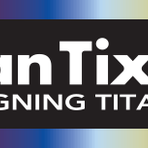Steel Giants in Turmoil: The Nippon Steel and U.S. Steel Merger Debate
August 3, 2024, 1:23 am

Location: United States, Pennsylvania, Pittsburgh
Employees: 10001+
Founded date: 1901
Total raised: $240M
In the world of steel, titans clash. Nippon Steel, a Japanese powerhouse, is eyeing a merger with U.S. Steel, a cornerstone of American industry. This deal promises to reshape the landscape of steel production. But it’s not without its storm clouds. The winds of dissent are blowing strong, particularly from Pennsylvania’s Governor Josh Shapiro. He stands as a sentinel for workers, voicing concerns that echo through the steel mills of the Keystone State.
Nippon Steel recently raised its profit forecast, a sign of confidence in its future. The company believes that the merger will bolster its position in the U.S. market. It’s a bold move, a chess game where every piece matters. Yet, the merger's fate hangs in the balance, swayed by political winds and labor sentiments.
Shapiro’s opposition is rooted in the heart of Pennsylvania, where steelworkers have long been the backbone of the economy. His stance is clear: if the United Steelworkers union is unhappy, he cannot support the deal. It’s a classic case of labor versus corporate ambition. The union’s discontent is a red flag, signaling potential job losses and a decline in local manufacturing.
The stakes are high. Steel is not just metal; it’s a symbol of American resilience. The industry has faced challenges from globalization and automation. A merger of this magnitude could either revitalize it or lead to its further decline. Shapiro’s concerns reflect a broader anxiety among workers. They fear that corporate mergers often prioritize profits over people.
Nippon Steel’s leadership is optimistic. They argue that the merger will create a stronger entity, capable of competing on a global scale. They envision a future where American and Japanese steelworks collaborate, sharing technology and expertise. It’s a vision of synergy, where two giants unite to face the challenges of the modern market.
However, optimism is not enough. The merger must navigate a labyrinth of regulatory approvals. The U.S. government will scrutinize the deal, weighing its impact on competition and employment. The voices of workers will resonate in these discussions. Their concerns cannot be brushed aside. They are the lifeblood of the industry.
As the merger debate unfolds, political dynamics play a crucial role. Shapiro’s position is not just about steel; it’s about political capital. He is a rising star in the Democratic Party, potentially eyeing a vice-presidential nomination. His stance against the merger could bolster his appeal among labor voters. It’s a delicate dance, balancing political ambition with the needs of constituents.
The merger’s implications extend beyond Pennsylvania. It could set a precedent for future corporate consolidations. If labor voices are sidelined, it may embolden other companies to pursue aggressive mergers without regard for workers. The stakes are not just local; they are national.
Nippon Steel’s commitment to the U.S. market is commendable. They see potential in American steel, a market ripe for growth. Yet, this potential must be matched with responsibility. The company must engage with workers, addressing their fears and aspirations. Transparency is key. Workers need to feel that their voices matter in this equation.
The clock is ticking. As negotiations continue, both sides must find common ground. Nippon Steel must reassure workers that their jobs are secure. Shapiro, in turn, must advocate for a deal that protects the interests of his constituents. It’s a balancing act, a tightrope walk between corporate interests and labor rights.
In the end, the merger could be a turning point for the steel industry. It could usher in a new era of collaboration and innovation. Or it could deepen the divide between workers and corporations. The outcome remains uncertain, a story still being written.
As the debate rages on, one thing is clear: the future of steel is at a crossroads. The decisions made today will echo for years to come. Will Nippon Steel and U.S. Steel forge a partnership that benefits all? Or will the voices of workers be drowned out in the clamor for profit? The answer lies in the hands of those who hold the power to shape the industry’s future.
In this high-stakes game, every move counts. The world watches as these steel giants navigate the complexities of merger talks. The fate of thousands of workers hangs in the balance. The steel industry stands at a pivotal moment, where ambition meets reality. The question remains: can they build a future that honors both progress and people? Only time will tell.
Nippon Steel recently raised its profit forecast, a sign of confidence in its future. The company believes that the merger will bolster its position in the U.S. market. It’s a bold move, a chess game where every piece matters. Yet, the merger's fate hangs in the balance, swayed by political winds and labor sentiments.
Shapiro’s opposition is rooted in the heart of Pennsylvania, where steelworkers have long been the backbone of the economy. His stance is clear: if the United Steelworkers union is unhappy, he cannot support the deal. It’s a classic case of labor versus corporate ambition. The union’s discontent is a red flag, signaling potential job losses and a decline in local manufacturing.
The stakes are high. Steel is not just metal; it’s a symbol of American resilience. The industry has faced challenges from globalization and automation. A merger of this magnitude could either revitalize it or lead to its further decline. Shapiro’s concerns reflect a broader anxiety among workers. They fear that corporate mergers often prioritize profits over people.
Nippon Steel’s leadership is optimistic. They argue that the merger will create a stronger entity, capable of competing on a global scale. They envision a future where American and Japanese steelworks collaborate, sharing technology and expertise. It’s a vision of synergy, where two giants unite to face the challenges of the modern market.
However, optimism is not enough. The merger must navigate a labyrinth of regulatory approvals. The U.S. government will scrutinize the deal, weighing its impact on competition and employment. The voices of workers will resonate in these discussions. Their concerns cannot be brushed aside. They are the lifeblood of the industry.
As the merger debate unfolds, political dynamics play a crucial role. Shapiro’s position is not just about steel; it’s about political capital. He is a rising star in the Democratic Party, potentially eyeing a vice-presidential nomination. His stance against the merger could bolster his appeal among labor voters. It’s a delicate dance, balancing political ambition with the needs of constituents.
The merger’s implications extend beyond Pennsylvania. It could set a precedent for future corporate consolidations. If labor voices are sidelined, it may embolden other companies to pursue aggressive mergers without regard for workers. The stakes are not just local; they are national.
Nippon Steel’s commitment to the U.S. market is commendable. They see potential in American steel, a market ripe for growth. Yet, this potential must be matched with responsibility. The company must engage with workers, addressing their fears and aspirations. Transparency is key. Workers need to feel that their voices matter in this equation.
The clock is ticking. As negotiations continue, both sides must find common ground. Nippon Steel must reassure workers that their jobs are secure. Shapiro, in turn, must advocate for a deal that protects the interests of his constituents. It’s a balancing act, a tightrope walk between corporate interests and labor rights.
In the end, the merger could be a turning point for the steel industry. It could usher in a new era of collaboration and innovation. Or it could deepen the divide between workers and corporations. The outcome remains uncertain, a story still being written.
As the debate rages on, one thing is clear: the future of steel is at a crossroads. The decisions made today will echo for years to come. Will Nippon Steel and U.S. Steel forge a partnership that benefits all? Or will the voices of workers be drowned out in the clamor for profit? The answer lies in the hands of those who hold the power to shape the industry’s future.
In this high-stakes game, every move counts. The world watches as these steel giants navigate the complexities of merger talks. The fate of thousands of workers hangs in the balance. The steel industry stands at a pivotal moment, where ambition meets reality. The question remains: can they build a future that honors both progress and people? Only time will tell.
